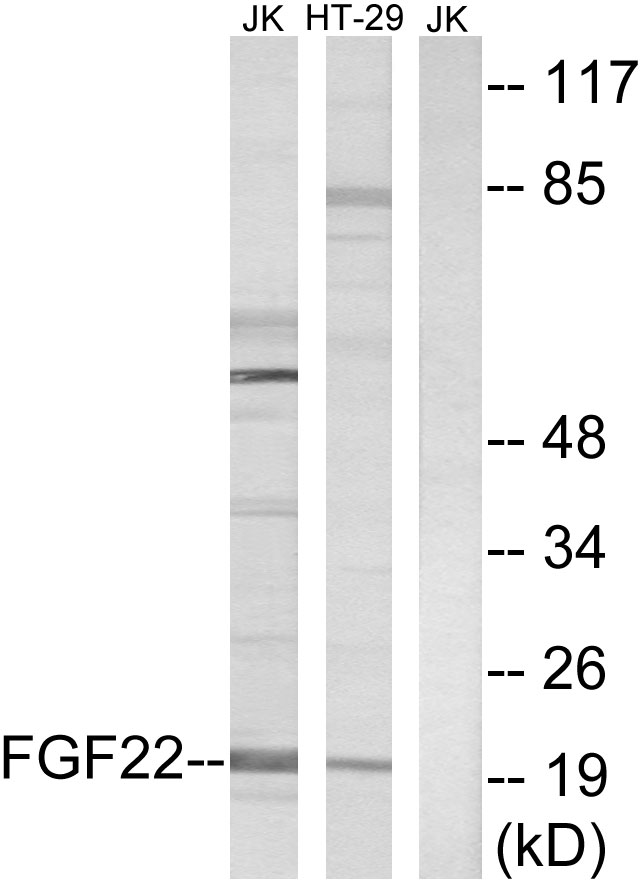
WB analysis of various samples using GTX11704 FGF22 antibody. Lane 1 : rat ovary tissue lysate Lane 2 : rat ovary tissue lysate Lane 3 : rat testis tissue lysate Lane 4 : rat testis tissue lysate
FGF22 antibody
GTX11704
ApplicationsWestern Blot
Product group Antibodies
TargetFGF22
Overview
- SupplierGeneTex
- Product NameFGF22 antibody
- Delivery Days Customer9
- Application Supplier NoteWB: 0.1-0.5microg/ml. *Optimal dilutions/concentrations should be determined by the researcher.Not tested in other applications.
- ApplicationsWestern Blot
- CertificationResearch Use Only
- ClonalityPolyclonal
- Concentration500 ug/ml
- ConjugateUnconjugated
- Gene ID27006
- Target nameFGF22
- Target descriptionfibroblast growth factor 22
- Target synonymsfibroblast growth factor 22, FGF-22
- HostRabbit
- IsotypeIgG
- Protein IDQ9HCT0
- Protein NameFibroblast growth factor 22
- Scientific DescriptionThe protein encoded by this gene is a member of the fibroblast growth factor (FGF) family. FGF family members possess broad mitogenic and cell survival activities and are involved in a variety of biological processes including embryonic development, cell growth, morphogenesis, tissue repair, tumor growth and invasion. The mouse homolog of this gene was found to be preferentially expressed in the inner root sheath of the hair follicle, which suggested a role in hair development. Alternative splicing results in multiple transcript variants. [provided by RefSeq, Jul 2014]
- Storage Instruction-20°C or -80°C,2°C to 8°C
- UNSPSC12352203






